This mozzarella cheese recipe is so easy! Plus, Homemade Mozzarella Cheese is easy and fun to make, not to mention it tastes great! It can be used with so many different recipes such as homemade pizzas, pasta dishes, and salads.
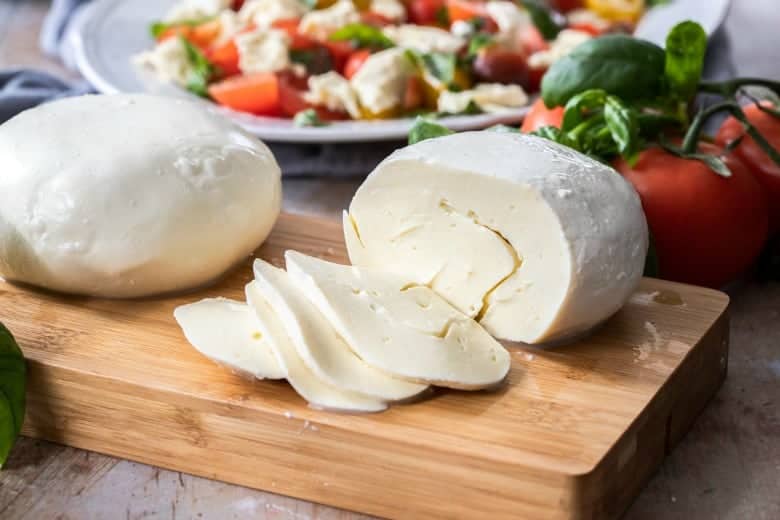
Having our own family milk cow means we normally have a lot of wonderful raw milk on hand.
Besides drinking it and making kefir or yogurt an easy way to use milk is by making homemade mozzarella cheese.
But, don't think you have to have a family milk cow to make homemade mozzarella. Oh no! You can use store-bought milk for great results!
Mozzarella is an Italian cheese that is quick, easy, and fun to make. We enjoy eating it fresh, as well as on pizza and in lasagna.
Be sure to try it on Homemade Wheat Thins or Almond Flour Pizza Crust - it is delicious in any recipe!
I have found that the process of making homemade Mozzarella cheese is very forgiving.
I use to be careful to use milk that was at least 3 days old as many recipes require. As milk sits, the acidity increases which allows the cheese to stretch. But, I have found with the milk my cow gives this waiting period is unnecessary.
A printable recipe version of the homemade mozzarella cheese follows the photo tutorial.
Instructions
Before getting started, be sure to check out Cheese Making Basics for helpful tips, supplies, and ordering information.
- Pour milk into a pot, sprinkle with citric acid and stir well. Milk must be cold or the citric acid does not work well.
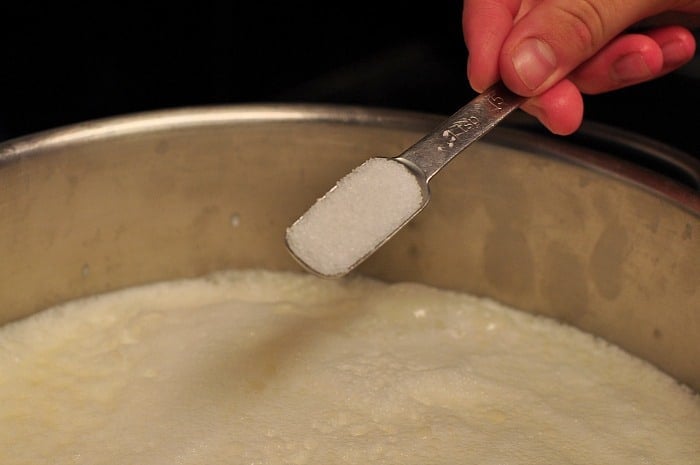
- Heat milk to 88F - 90F over medium heat. If you overheat - just let it cool back down.
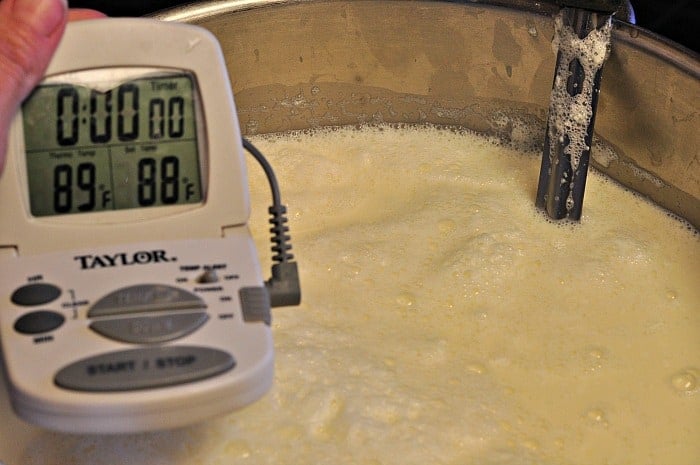
- Pour dissolved rennet into the milk while stirring.
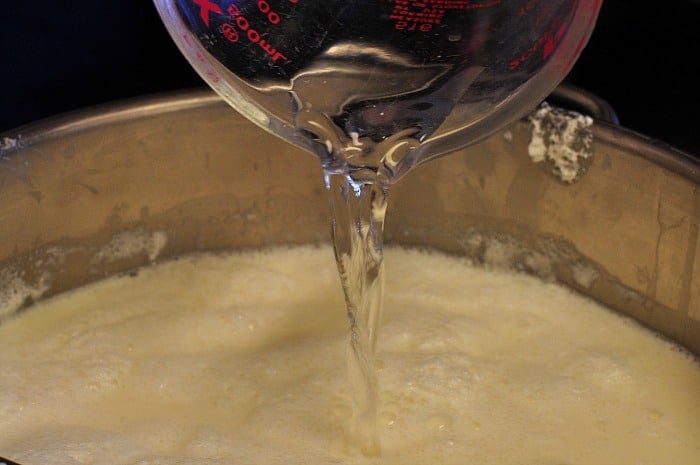
- Turn off the heat. Stir slowly and after a few minutes, the milk will begin to thicken. Globs of white curd will separate from the liquid (whey).
If it doesn't coagulate immediately, let the milk sit for about 30 minutes.
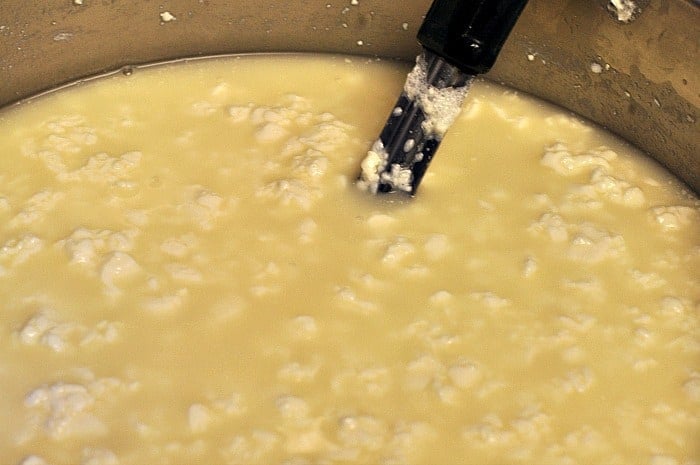
- Once the milk has coagulated and the whey separated, turn the heat to high and heat milk to 110F.
- Place a colander over another pot and pour or spoon out the curds into the colander.
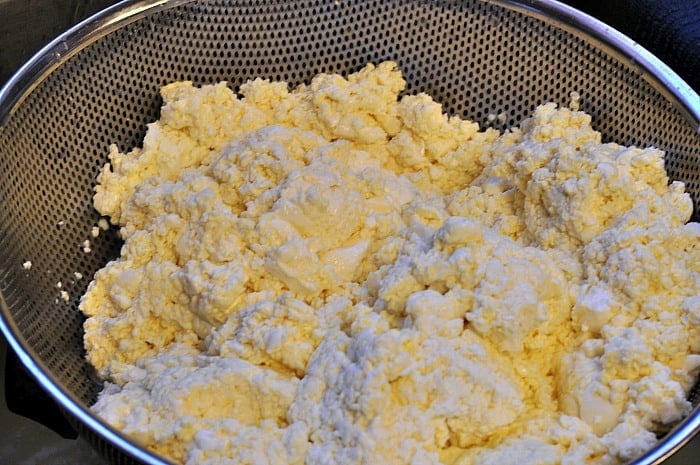
- Continue to heat the whey. Press whey out of the curds in the colander. Place the curds back into the pot of whey and heat until 120 F.
Now, for the fun part of making homemade mozzarella cheese!
- With a spoon, lift the curds out of the whey - cool a few seconds, if necessary, and begin pulling and stretching it into a rope. The cheese will break apart at this point if it is not hot enough - just put it back into the whey and let it heat further.
- After stretching it into a rope, return it back into the whey to heat it back up.
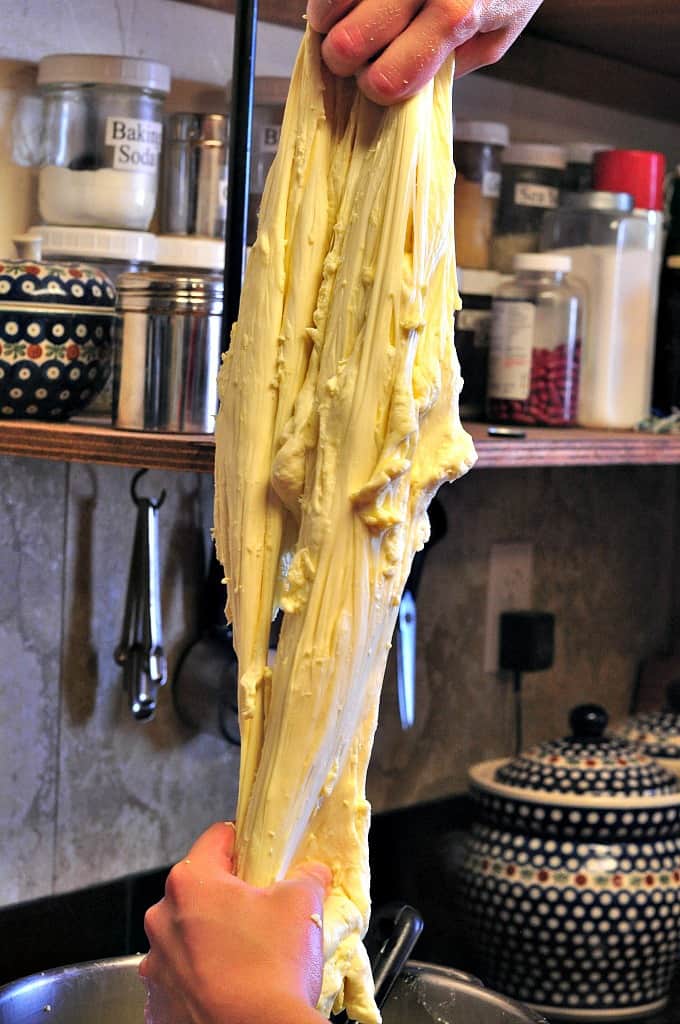
- Once heated again, stretch it again. Continue this process several times until it takes on a shiny, soft, and smooth appearance.
The photo above is from the first stretching and as you can see it is tearing on the left side. It needs a few more stretches.
- It should be ready by the time the whey reaches 150F - 160F. (If the whey gets too hot, the cheese will melt into it.)
As the whey heats to higher degrees be sure to protect your hands and use gloves - it is hot!
You will know the mozzarella cheese is done when it no longer breaks and tears during the stretching process - it also becomes shiny and smooth in appearance.
- Once stretched enough, pour 4 teaspoons (may use more if desired) salt on the counter. Remove mozzarella from the whey and place it on the salt.
- Knead the salt into the cheese but work quickly as it must be hot to absorb the salt.
- Place the cheese back into the whey briefly until it is hot. Remove and roll into a log or place in the desired container.
- Cover with plastic wrap and refrigerate.
I make 4-gallon batches at a time and place them into a rectangular dish similar to a loaf pan. Once chilled, we either eat it fresh with crackers or grate and freeze it.
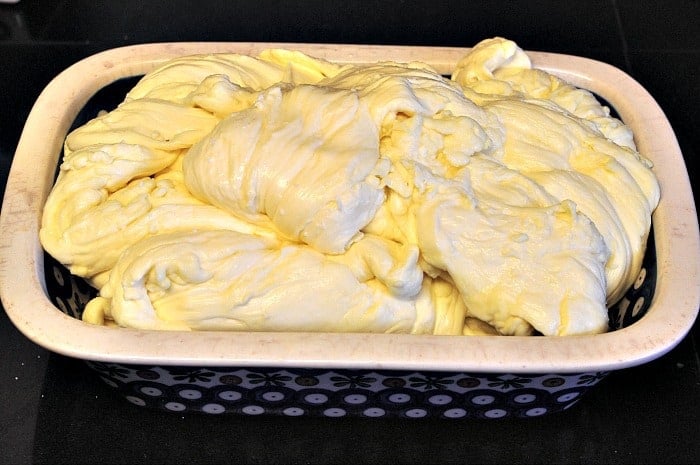
After thoroughly chilling in the refrigerator, I will grate this batch and we will have pizza!
Enjoy!
Storage
Since it's more efficient to make mozzarella in bulk, you may want to store it.
This recipe can be stored for a couple weeks in the fridge, or a couple months in the freezer. Let frozen cheese thaw in the refrigerator for at least 24 hours prior to using it.
More homemade cheese recipes
Making homemade cheese can be a fun and rewarding process! Check out some of my favorite cheese recipes to make at home.
- Ricotta Cheese - This is a great way to put your leftover whey to good use. It can be eaten plain, with herbs added, or add it to other recipes.
- Feta Cheese - This is a great cheese to make when first beginning to make homemade cheese. It's another one we love to put on crackers.
- Cottage Cheese - This is another easy cheese to make that tastes delicious in a bowl with fresh fruit!
This mozzarella cheese makes a delicious fresh base for mozzarella sticks!
Frequently Asked Questions
Unlike other cheese-making processes, this homemade mozzarella cheese recipe calls for heating the curds to 170 F and then stretching it like taffy.
This pulling and stretching give the mozzarella cheese the stringiness it is famous for. Mozzarella cheese is also one of the easiest soft cheeses to make!
Made fresh, it stores in the refrigerator for a couple of weeks and in the freezer for several months
Whey is one of the two main proteins found in milk. It is the liquid remaining after the milk has been curdled and strained
When it comes to making mozzarella cheese, the best milk to use is whole milk. This is because mozzarella is a high-moisture cheese, and using whole milk will provide the necessary fat and protein content to give the cheese the right texture and flavor.
While you can technically make mozzarella cheese with other types of milk, such as skim milk or 2% milk, the resulting cheese will not be as rich or flavorful, and may not have the desired texture. Whole milk is generally considered the best choice for making mozzarella cheese because it provides the best balance of fat and protein for creating a high-quality, delicious cheese.
Traditional mozzarella is made with Italian buffalo milk.
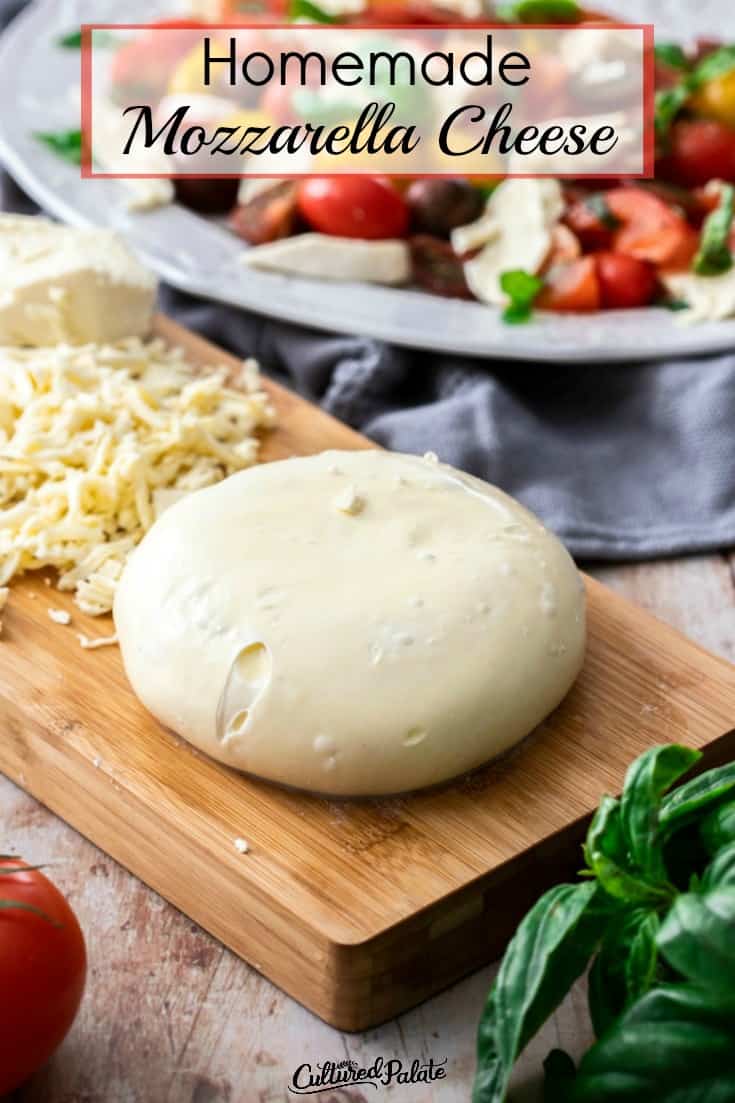
If you’ve tried this Homemade Mozzarella Cheese Recipe or any other recipe on Cultured Palate please take a minute to rate the recipe and leave a comment letting me know how you liked it. I love hearing from you! You can also FOLLOW ME on PINTEREST, FACEBOOK, INSTAGRAM, YouTube and TWITTER.
📋 Recipe
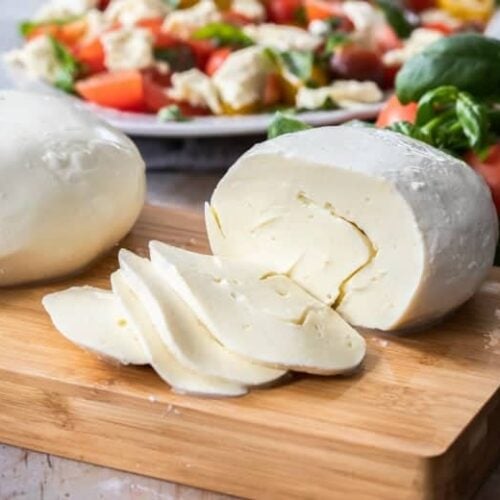
Homemade Mozzarella Cheese
Ingredients
- 2 gallons whole milk whole milk gives a larger yield than skim
- 3 teaspoons citric acid powder
- ¼ teaspoon tablet (or ½ teaspoon liquid) rennet , dissolved in ¼ cup cool water
- 4 teaspoons salt
Instructions
-
Pour milk into pot, sprinkle with citric acid and stir well. Milk must be cold or the citric acid does not work well.
-
Heat milk to 88F - 90F over medium heat. If you overheat - just let it cool back down!
-
Pour dissolved rennet into the milk while stirring.
-
Turn off the heat.
-
Stir slowly and after a few minutes, the milk will begin to thicken. Globs of white curd will separate from the liquid (whey). If it doesn't coagulate immediately, let the milk sit for about 30 minutes.
-
Once the milk has coagulated and the whey separated, turn heat to high and heat milk to 110F.
-
Place a colander over another pot and pour or spoon out the curds into the colander.
-
Continue to heat the whey.
-
Press whey out of the curds in the colander.
-
Place the curds back into the pot of whey and heat until 120 F.
-
With a spoon, lift the curds out of the whey - cool a few seconds, if necessary, and begin pulling and stretching it into a rope. The cheese will break apart at this point if it is not hot enough - just put it back into the whey and let it heat further.
-
After stretching it into a rope, return it back into the whey to heat back up.
-
Once heated again, stretch it again. Continue this process several times until it takes on a shiny, soft and smooth appearance. It should be ready by the time the whey reaches 150F - 160F. (If the whey gets too hot, the cheese will melt into it.) As the whey heats to higher degrees be sure to protect your hands and use gloves - it is hot!
-
You will know the mozzarella cheese is done when it no longer breaks and tears during the stretching process - it also becomes shiny and smooth in appearance.
-
Once stretched enough, pour 4 teaspoon (may use more if desired) salt on the counter.
-
Remove mozzarella from the whey and place it on the salt. Knead the salt into the cheese but work quickly as it must be hot to absorb the salt.
-
Place the cheese back into the whey briefly until it is hot.
-
Remove and roll into a log or place in the desired container.
-
Cover with plastic wrap and refrigerate.
-
Use as desired - grated, sliced...
Notes
- To make a 4 gallon batch use 5 teaspoon citric acid and 1 teaspoon rennet.
- You can freeze the mozzrella once it's ready
- Before getting started, be sure to check out Cheese Making Basics for helpful tips, supplies and ordering information. If you are interested in cheese making, I would highly recommend the book, available from my affiliate partner, Home Cheese Making by Ricki Carroll – it is an excellent resource.

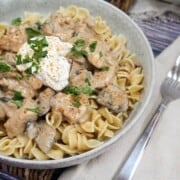
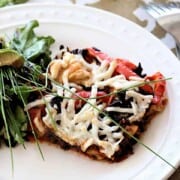

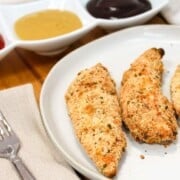

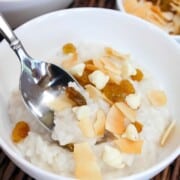


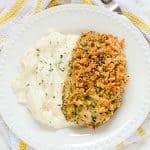


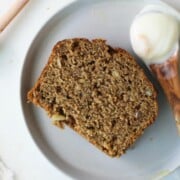

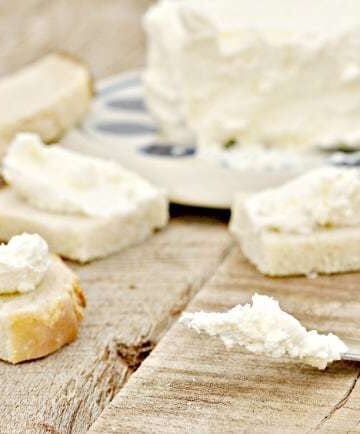
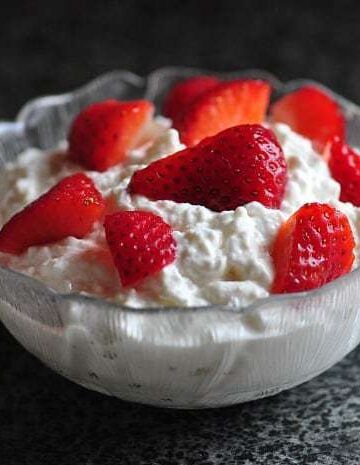
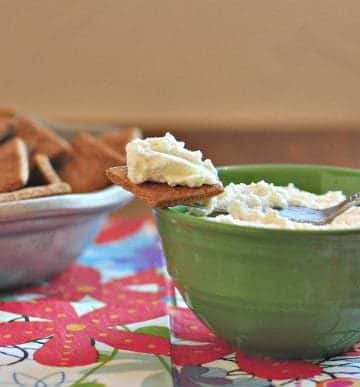
Carol Adams
Your cheese recipe looks great! We have a Jersey cow and I frequently need to use up the milk. Cheese would be great!
I noticed your picture looks like you are using a copper or brass pot. I recently acquired a brass pot but am not sure what to do with it! Do you think it's ok for making cheese? Know not to do acidic things.
Thanks!!
Dina-Marie
Carol, I would think it would be great! Let me know how it works!
Dina-Marie
Kathyrn, I am not sure what you are asking but my book is an ebook which you can order through my site.
Ty Langis
Hi i followed your instructions and came out with a great cheese however I find it much to soft to grate. Is there a step that I missed or can add so that my cheese grates like the cheese in your picture.
Dina-Marie
Ty, once you put it in the refrigerator and chill it, it should grate just fine. Sometimes, it may be a bit soft - by this, I mean that it smears a bit on the grater when grating by hand. But, it still grates very well. Let me know if this doesn't work.
Ty Langis
I have had it in thr fridge in a pan covered with wrap for a day. When i took it out if the pan i cut it in half and wrapped it up and even then does not seem to be holding the initial shape that it was when cut.
Dina-Marie
Ty, I am not sure. My first thought is to double check your temperatures and make sure you are cooking and stretching it completely. Let me know if this works.
Emily
I had no idea you could make mozzarella at home so easily, I can't wait to try it!
Dina-Marie
Emily, be sure to let me know how it goes for you! Making it yourself really is easy.
Michelle
So when I made it, I only did one gallon, this halved the recipe. But after I cooled it, it was very hard, dry, sorta yellow & transparent... any idea what I did wrong?
Dina-Marie
Michelle, it would not be a problem halving the recipe as long as you halved everything else. The only thing I can think of is that you added to much rennet? Were you using raw milk or store bought? Still, I don't know what would cause this unless you added too much of either rennet or citric acid.
Jon
Hi
I folowed your recipe and i made a very good cheese
But i got only 320 grams of cheese
Did i make a mistake?
I suppose it should be more
Dina-Marie
Jon, it is normal for the amount of cheese made to vary and it all depends on the amount of fat/cream in the milk. I hope this helps and I am so glad you enjoyed it!
Tammy Sanford
What is rennet and is it found in the grocery store or speciality food store.
Dina-Marie
Tammy, rennet is used in cheesemaking and is an enzyme that causes the milk to coagulate. You can find more information on the Basics of Cheesemaking by clicking the link. Here is the type of rennet I use: Animal Rennet. You may also be interested in my Simple Cheesemaking ebook that gives not only more info on the process, as well as, plenty of recipes.
Patti Z
I found a recipe that called for Calcium Chloride if using whole store bought milk and to add it to the cold milk. It also called for Citric Acid and Rennet. Do you know why that recipe calls for Calcium Chloride when using whole store bought milk?
Dina-Marie
Patti, calcium chloride is used to help make the cheese firmer. I would try making it first without it - I have not had a problem without it and the cheese turns our fine.
Mindy
Just finished and it came out perfect! So easy and fun. I'm curious to know what you do with your whey.
Dina-Marie
Mindy, I love making whey ricotta out of the whey. And, the ricotta made from the whey of mozzarella is a finer ricotta that works great for most recipes in which it is an ingredient.
Marie
Eeeeeeeepppp! Ok, incredibly childish, I know but I just made mozzarella from scratch for the first time ever! Thanks for the great recipe and detailed instructions.
Dina-Marie
So glad it went well, Marie - Way to go!